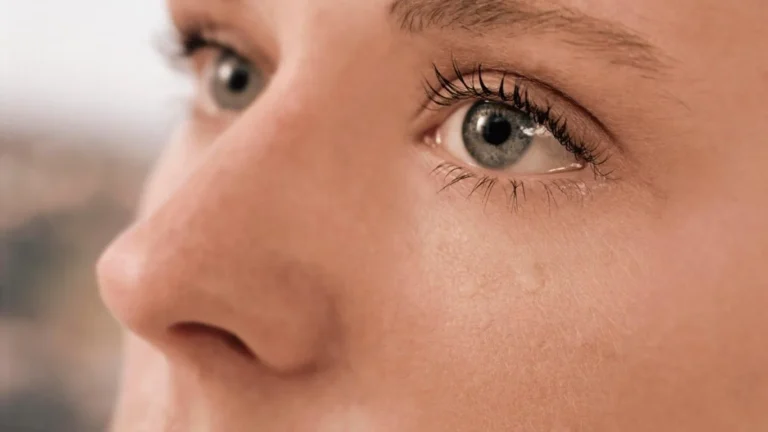Can Asthma Cause Eye Pressure & Headaches? Uncover the Link to Relief
As someone who’s spent years working with patients suffering from asthma, I’ve seen it all: the wheezing, the shortness of breath, the constant struggle to breathe properly. But one thing I didn’t expect to be so common among asthma patients was the link between asthma, eye pressure, and headaches. It’s not something you always hear about in mainstream asthma discussions, but it’s an issue that deserves more attention. In this post, I’m going to break down whether asthma can cause eye pressure and headaches, and if so, how it happens. Trust me, understanding this connection is crucial if you’re dealing with asthma, and maybe even if you aren’t.
Can Asthma Really Cause Eye Pressure and Headaches?
If you’re one of those people who’s asked yourself, “Can asthma cause eye pressure and headaches?” you’re not alone. It’s a question that many of my patients ask when they’re experiencing these issues along with their asthma symptoms. And it’s a fair one, considering the interconnectedness of our respiratory system, nervous system, and even the health of our eyes. The short answer? Yes, asthma can contribute to both eye pressure and headaches, though the reasons for this are complex and multifactorial.
To help you make sense of it all, let’s dive into the different ways asthma could be related to eye pressure and headaches. Spoiler alert: it might be linked to the inflammation and stress that asthma causes in your body. But let’s not get ahead of ourselves—let’s break it down properly.
How Inflammation from Asthma Can Affect Your Eyes and Head

When most people think of asthma, they think of the lungs: shortness of breath, wheezing, coughing, and all those familiar symptoms. But asthma is, at its core, an inflammatory condition. This inflammation doesn’t just stay in your lungs; it can spread throughout your body. In fact, asthma-related inflammation is one of the primary culprits behind headaches and increased eye pressure. Let me explain:
- Inflammation in the Airway: Asthma causes your airways to swell, which leads to difficulty breathing. This process can also trigger systemic inflammation—meaning your body as a whole becomes inflamed. When your body experiences widespread inflammation, it can affect other areas, including your eyes and head.
- Impact on the Nervous System: The inflammation can also affect the nervous system, leading to issues like migraines or tension headaches. This is particularly true for asthma sufferers who are also prone to allergic reactions or who have other conditions that exacerbate inflammation.
- Vascular Effects: Inflammation can influence your vascular system, which includes the blood vessels around your eyes. This could result in an increase in eye pressure, which in turn may lead to discomfort or a full-blown headache.
So, asthma-related inflammation isn’t just about the lungs; it could be affecting your entire body. And the fact that asthma often goes hand-in-hand with allergic reactions just makes it worse. If you’re constantly dealing with these flare-ups, the persistent inflammation might be contributing to that nagging eye pressure and frequent headaches.
How Asthma Medications Could Be Playing a Role

As you may know, asthma treatment often involves medications like bronchodilators or corticosteroids. These medications help open up the airways and reduce inflammation, but they don’t come without side effects. Some of these side effects might surprise you, especially if you’ve been using inhalers or other asthma treatments for a long time. Headaches and eye pressure can sometimes be linked to certain asthma medications.
- Corticosteroids: These medications are used to reduce inflammation in the airways. While they’re incredibly effective for asthma control, they can have a side effect of increasing pressure in the eyes, especially when used over long periods. This can potentially lead to glaucoma or other eye problems if not monitored carefully.
- Beta-agonists (Bronchodilators): These inhalers are often prescribed to relax the muscles in the airways, making it easier to breathe. However, they can also cause headaches due to the way they affect blood vessels. These side effects might seem like a small price to pay for better breathing, but they can definitely contribute to the feeling of having a constant headache.
It’s important to note that while these side effects aren’t guaranteed to happen to everyone, they can contribute to discomfort and even exacerbate your asthma symptoms. So, if you’re noticing a pattern between your asthma treatment and eye pressure or headaches, it might be worth having a conversation with your doctor about potential alternatives or adjustments to your treatment plan.
Why Does Stress from Asthma Make Eye Pressure Worse?

Stress is another factor that plays into this whole equation. I can tell you from experience, being an asthma patient can be a rollercoaster of emotions and physical strain. When your asthma symptoms act up, it’s not just your lungs that are affected. The mental and emotional stress that comes with struggling to breathe can trigger a whole host of reactions in your body.
- Fight or Flight Response: Asthma attacks often activate your body’s “fight or flight” response, which can lead to increased heart rate, muscle tension, and even an increase in blood pressure. This, in turn, can contribute to headaches and heightened eye pressure.
- Anxiety: If you’re dealing with asthma-induced anxiety, the constant worry about an impending attack can keep your body in a heightened state of alert. This anxiety can lead to muscle tension, which could affect the muscles around your eyes and forehead, making your headaches feel even worse.
Asthma doesn’t just impact your physical health; it takes a toll on your mental well-being as well. So, if you’re experiencing more headaches or eye pressure when your asthma flares up, it might not be all physical—stress and anxiety play a big role in the experience too.
How Asthma and Sinus Issues Might Be Interconnected

Another layer to the whole asthma-eye pressure-headache connection has to do with sinus problems. If you’ve ever had a bad sinus infection or even just a mild cold, you know how it can affect your head and eyes. You might not realize this, but asthma and sinus issues often go hand in hand. This is something I see a lot in my practice—people with asthma tend to be more prone to sinusitis and sinus infections. And guess what? Sinus problems can certainly cause headaches and increased eye pressure.
Let’s break it down a little further. When asthma flares up, it can cause your nasal passages to swell, making it harder to breathe through your nose. This often leads to congestion and sinus pressure, which can be a breeding ground for headaches. The added pressure in your sinuses can radiate into your eyes, causing discomfort or even a sensation of increased eye pressure. If you’re already dealing with asthma, these sinus issues can make your symptoms feel ten times worse. It’s like a snowball effect that can have a real impact on your quality of life.
Can Asthma Trigger or Worsen Migraines?

If you’re someone who suffers from migraines, you might be wondering if there’s a connection between asthma and those debilitating, throbbing headaches. Well, there’s good news and bad news here. The bad news is that asthma can sometimes trigger migraines or make them worse. The good news is that understanding the triggers and managing your asthma can help keep these migraines under control.
One of the primary ways asthma can contribute to migraines is through the stress it places on your body. As I mentioned earlier, asthma isn’t just a physical condition—it’s an emotional and mental rollercoaster. The fear of not being able to breathe, the frustration with flare-ups, and the anxiety that comes with asthma attacks can all contribute to an increased likelihood of getting a migraine. This is especially true if you’re prone to migraine triggers like stress, changes in air pressure, or even certain smells or allergens that might trigger both your asthma and your migraine.
Additionally, the inflammation from asthma can affect the blood vessels in your brain, which is one of the leading causes of migraines. If you already have sensitive blood vessels in your brain (as some migraine sufferers do), the added stress of asthma flare-ups might make you more susceptible to a migraine attack.
The Role of Allergies in Asthma and Headache Development

If you’ve ever had an allergic reaction, you know just how miserable it can make you feel. Unfortunately, for many asthma sufferers, allergies are part of the deal. And when you throw allergies into the mix, it can contribute significantly to headaches and eye pressure. Asthma and allergies are often linked—both conditions involve an immune system that reacts to perceived “threats,” like pollen, dust, or pet dander, in an exaggerated way. This kind of immune response doesn’t just affect your breathing. It can also lead to sinus congestion, inflammation in the eyes, and headaches.
For example, pollen is one of the biggest culprits that can trigger both asthma flare-ups and allergic reactions. When your body reacts to pollen, it releases histamines, which can cause symptoms like nasal congestion, itchy eyes, and headaches. The nasal congestion that comes with allergies can lead to blocked sinuses, which can increase eye pressure and make headaches worse. If you already have asthma, the inflammation and swelling from allergies can further exacerbate your breathing issues, leading to a vicious cycle of discomfort. You can’t breathe well, your sinuses get blocked, and before you know it, you’re dealing with a painful headache that just won’t go away.
Managing your allergies is a crucial step in managing both your asthma and any associated headaches or eye pressure. It’s worth talking to your doctor about allergy treatments like antihistamines or nasal sprays that can help reduce inflammation and ease the pressure on your sinuses. This can ultimately help prevent some of the headache and eye pressure problems that come with asthma flare-ups and allergic reactions.
Can Environmental Factors Make Things Worse?
We’ve all heard that air quality can have a huge impact on asthma, but it can also influence your likelihood of developing headaches or experiencing eye pressure. If you live in an area with high pollution, poor air quality, or seasonal allergens, the environment could be playing a significant role in your discomfort.
- Air Pollution: Pollutants in the air, like ozone or particulate matter, can aggravate asthma symptoms. This irritation can cause inflammation not just in your lungs but also in your sinuses and the blood vessels in your brain, which might contribute to headaches. Increased exposure to air pollution has even been linked to more frequent and severe migraines in some individuals.
- Seasonal Allergies: Depending on where you live, certain times of the year might trigger a double-whammy of asthma symptoms and allergies. When allergens like ragweed or pollen are at their peak, they can aggravate both your asthma and your sinuses, leading to the dreaded combination of eye pressure and headaches.
In cases like this, it’s even more important to stay on top of your asthma management. During high-pollen seasons or when the air quality is poor, you might need to take extra precautions to avoid triggers. This could mean staying indoors on high-pollution days, using air purifiers in your home, or increasing your asthma medication to stay ahead of any flare-ups. Managing the environmental factors that contribute to your asthma will not only improve your breathing but also reduce the risk of developing headaches and eye pressure.
How to Manage Eye Pressure and Headaches with Asthma

Now that we’ve explored how asthma, eye pressure, and headaches are all interconnected, the next logical question is: what can you do about it? If you’re dealing with asthma-induced eye pressure or chronic headaches, there are a few strategies you can try to manage these symptoms and improve your overall quality of life. From treatment adjustments to lifestyle changes, managing both asthma and its side effects like headaches and eye pressure is possible with the right approach.
1. Work Closely with Your Doctor to Adjust Asthma Medications
One of the first steps you should take is to review your current asthma medications with your doctor. If you’re experiencing headaches or increased eye pressure, your inhalers or other asthma treatments might be part of the issue. As we discussed earlier, medications like corticosteroids and beta-agonists can have side effects that trigger these symptoms.
In my experience, a tailored treatment plan is key. Your doctor may recommend switching medications or adjusting dosages to find something that doesn’t exacerbate your headaches or eye pressure. For example, if you’re on a high-dose corticosteroid, your doctor might opt for a lower dose or try a different anti-inflammatory treatment to control asthma without causing side effects.
It’s also important to discuss non-inhaled options like leukotriene modifiers or biologics if inhalers aren’t doing the trick. These medications can help reduce asthma symptoms without some of the side effects that come with oral steroids or bronchodilators. So, don’t hesitate to have a conversation with your healthcare provider about your symptoms. Sometimes it’s about trial and error, but finding the right combination can make all the difference.
2. Implement Stress-Relief Techniques
As we touched on earlier, stress is a major player when it comes to both asthma flare-ups and headaches. If you’re feeling stressed or anxious about your asthma, it can trigger a cycle of worsening symptoms. Managing your stress levels can be a game-changer for reducing both asthma attacks and the related headache/eye pressure issues.
In my experience, relaxation techniques like deep breathing exercises, yoga, and even meditation can be incredibly helpful for both your mind and body. These practices help lower overall stress levels, which in turn can ease asthma symptoms. If you’re new to mindfulness or yoga, I’d recommend starting slow and gradually integrating them into your daily routine. I’ve seen patients improve significantly just by incorporating a few minutes of breathing exercises each day to keep their stress levels in check.
Physical activity is another great way to combat stress and anxiety. Even a simple walk outdoors can have a positive effect. However, it’s important to listen to your body and avoid strenuous exercise during an asthma flare-up. Always consult with your doctor about which exercises are safe for you.
3. Control Your Allergies to Reduce Sinus Pressure
If your asthma is compounded by allergies, controlling your allergic reactions is key to minimizing headaches and eye pressure. As we’ve discussed, allergies can trigger both asthma attacks and sinus congestion, which contribute to those painful headaches and eye pressure sensations.
There are various ways you can manage your allergies. First and foremost, limit your exposure to allergens. If pollen is a trigger, stay indoors during high-pollen days or use air purifiers to clean the air in your home. If dust mites or pet dander are an issue, consider washing your bedding regularly, using hypoallergenic pillowcases, and even investing in a high-quality vacuum cleaner to reduce allergens in your home.
Over-the-counter antihistamines can be effective for reducing allergy symptoms. Nasal corticosteroid sprays or decongestants can also help clear out nasal congestion and reduce sinus pressure. However, make sure to talk to your doctor before starting any new medications to avoid potential interactions with your asthma treatments. If you’re dealing with persistent sinus issues, your doctor might recommend allergy shots or other long-term solutions to control your symptoms.
4. Lifestyle Changes: Improve Your Environment

Environmental factors can play a huge role in how well you manage asthma, eye pressure, and headaches. By making some simple changes at home, you can reduce the triggers that contribute to your symptoms.
- Indoor Air Quality: Using air purifiers with HEPA filters can help reduce airborne allergens in your home. Additionally, consider keeping windows closed on high-pollen days to prevent allergens from entering your living space.
- Humidity Control: Dry air can irritate your airways and increase asthma symptoms, while excessive humidity can worsen sinus issues. A humidifier or dehumidifier can help maintain a comfortable and healthy environment in your home.
- Avoiding Strong Odors and Fumes: Strong smells like perfume, smoke, or cleaning chemicals can exacerbate both asthma and headaches. Make sure to use gentle, fragrance-free products in your home to reduce irritation.
Making your home a sanctuary where you can breathe easy will not only help with asthma but also reduce sinus pressure and headaches. Small changes can go a long way in improving your overall health and well-being.
5. Get Regular Check-ups to Stay Ahead of the Problem
Lastly, don’t forget to schedule regular check-ups with your healthcare provider. Asthma is a chronic condition that requires ongoing management, and staying on top of your symptoms is crucial. During these visits, talk to your doctor about any changes you’ve noticed, especially if you’re experiencing headaches or eye pressure that seems connected to your asthma.
Even if you’re feeling well, regular asthma check-ups can help prevent flare-ups before they start. Your doctor may adjust your treatment plan based on the time of year, your symptoms, or any other health changes you’ve experienced. Keeping a log of your symptoms, including headaches and eye pressure, can be helpful for your doctor to track patterns and make adjustments accordingly.
References
For more information on managing asthma, you can check out reputable sources like Asthma.org or the Mayo Clinic for in-depth articles on asthma and its related symptoms.
Disclaimer
The information provided in this article is for general informational purposes only and should not be considered medical advice. Always consult with your healthcare provider before making any changes to your asthma treatment plan or starting any new medications. Individual health conditions may vary, and your doctor can help you create a personalized approach to managing asthma, eye pressure, and headaches.

Bianca Nala is a compassionate Nurse Practitioner with a strong background in primary and respiratory care. As a health writer for Healthusias.com, she combines her clinical expertise with a talent for clear, relatable storytelling to help readers better understand their health. Bianca focuses on topics like asthma, COPD, chronic cough, and overall lung health, aiming to simplify complex medical topics without losing accuracy. Whether she’s treating patients or writing articles, Bianca is driven by a single goal: making quality healthcare knowledge accessible to everyone.






